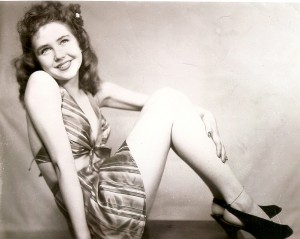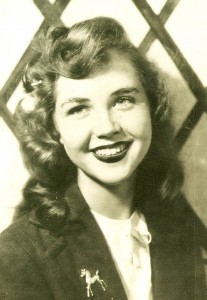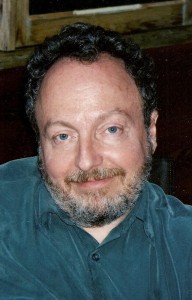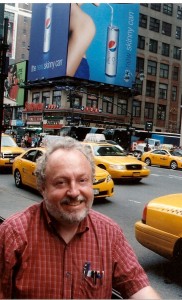The Truth About On The Road
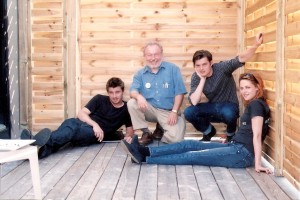
Gerald Nicosia with actors at Beat Boot camp, Montreal, July 2010. From left, Garrett Hedlund, Nicosia, Sam Riley, Kristen Stewart
Lionel Rolfe
In his latest book, Gerald Nicosia has unlocked the dynamic of Jack Kerouac and Neal Cassady, and not a moment too soon. Nicosia, the author of “Memory Babe,” the definitive Jack Kerouac book, was an advisor to the “On The Road” movie due to be premiered in May at the Cannes Film Festival. “On The Road,” published in 1957, was of course, the book that made Kerouac famous. It was inspired by Jack London’s famed book, “The Road,” published in 1907.
Nicosia’s new book is “One And Only: The Untold Story of On The Road.”
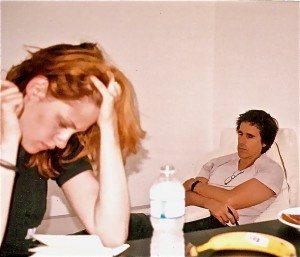
Kristen Stewart listens and takes notes to tape of Lu Anne interviewed by Gerald Nicosia; Walter Salles in background
Its genesis was on the set of “On The Road,” when he was hired to teach the actors what beatnik life was all about.
Nicosia had thirty years previously interviewed Lu Anne Henderson, known as Marylou in “On The Road” for “Memory Babe.”
Cassady famously wrote Lu Anne, “We’ll be together, you are my one and only wife.” And through all the wives and husbands and boyfriends and girlfriends, they were each other’s lovers to the end of time.
Kerouac and Cassady had a sometimes homoerotic relationship but Nicosia says it was Lu Anne who brought them together, and encouraged them to love each other in a way that defined the beat movement.
Up until now, most of what people know about Cassady and Kerouac comes from Carolyn Cassady, Cassady’s second wife. Her memoirs shaped the 1980 film “Heart Beat,” starring Nick Nolte as Cassady and Sissy Spacek as Carolyn.
The new film is more from the viewpoint of Lu Anne, Cassady’s first wife. That is because Nicosia as the preeminent Kerouac scholar was hired as an advisor for “On The Road.” When he played the tapes for actress Kristin Stewart, both he and the actress had some major revelations.
Stewart plays Marylou, who was 15 when she met Cassady. Marylou was a sweet 16 when they married, discounted as the stunning 16-year-old blond bimbo who Kerouac and Cassady shared, but otherwise was of little account.
“One And Only: The Untold Story of On The Road” strongly disputes that account, and portrays Lu Anne as as the glue that bound these two powerful characters. She molded their relationship, and thus was a major catalyst of American literature.
Carolyn portrayed her rival as a bimbo, but the new book, which Nicosia co-wrote with Lu Anne’s daughter Anne Marie Santos, does not. She was no more a blond bimbo in real life than Marilyn Monroe was.
To be sure, a lot of serendipity was involved in how the story unfolded. Nicosia decided to play the interview for Stewart during a beat boot camp “On The Road” director Walter Salles set up in Montreal in the summer of 2010. Nicosia had recorded the hours-long interview with Lu Anne in 1978. For Stewart, she was looking for the rhythm of Lu Anne’s language. For Nicosia, he realized that he had not really understood what Lu Anne was saying when he first recorded the interview.
Nicosia came face to face with the realization that when he interviewed Lu Anne he was still a too-young a man, too much under the influence of his Catholic education. He realized he had missed the most important things Lu Anne was saying, perhaps because because he wasn’t mature enough to grasp what she was saying.
One example–Lu Anne had described how Kerouac had cried like a baby in her arms at the end of a cross country jaunt in Cassady’s new Hudson. With almost no warning, Cassady pushed Kerouac and Lu Anne out of the car on a rough San Francisco street, and drove off. Nicosia simply hadn’t grasped the implications of what she was saying, so when he listened to it more than three decades later, it was suddenly all new.
Here was Kerouac, penniless, and although he’s with Lu Anne, feeling friendless. That is there were no friends to drop in on. He’s reduced to picking up cigarette butts from the street, and he’s hungry. He sees a bakery window with a vision from paradise–a freshly baked roll. He was hungry but he didn’t have the money to purchase a roll, and worse, the baker was this woman peering back at him, obviously regarding him as a potential thief of her wares. Suddenly, Kerouac bursts into a long prose poem about how all the angels in heaven are forced to walk the plank, and dive off into the unformed void above him. In that instant Kerouac believes he must have been a thief in a former life just like Cassady was a thief in this life.
Kerouac later told Allen Ginsberg that the abandonment scene was the most important one in the book. Don’t misunderstand, Cassady could be terribly jealous of Lu Anne. Yet here he was consciously pushing his wife on his best friend, partly because he saw that the two were strongly attracted. Cassady wants them to become lovers because in that way he still is controlling the situation–or thinks that he is.
In On The Road, Kerouac says he wanted to marry Lu Anne, but then goes into a probably mostly paranoid description of her abandoning him for some rich guy in a Cadillac. Lu Anne tells it another way. She gets them into a hotel run by an old acquaintance, and then Kerouac lies there all night, holding her and crying like a baby, paralyzed, unable to move from the bed, even for some considerable time after that.
It was up to her, a 16-year-old kid, to get the money and keep the two of them together, body and soul.
Although Lu Anne was both men’s lover, her greatest attachment was to Cassady, with whom she maintained a close and sexual relationship through all his years and their other marriages and lovers right up to the very end. After Cassady’s death, she went into her own terrible decline. She had already weathered Kerouac’s death, but Cassady had been her soul mate.
In a letter she wrote to Neal before he died–it apparently was never sent–she contemplated his feelings for him. ”I’ve suddenly realized at this late date that you’re my what? I don’t know what really, all I know is that as I’m sitting here in Tampa, I can’t stand the thought of not knowing you…Oh Neal I love you…I feel you as much now as when I was sixteen. Even when I say I love you I cringe. You’ve dominated most of my life, & if I could feel your arms around me I could go on forever. Is that theatrical? I’m just talking baby. Just anything to sense some of this torment…”
Nicosia realized that Lu Anne’s old interview was now offering new insights into the menage-a-trois behind the writing of “On The Road.”
It’s not that Nicosia hadn’t been impressed when he first met Lu Anne in 1978. He records that her presence was formidable. He interviewed her when it had been at least a decade since her two primary lovers were gone.
“What I saw was a large (larger than I had expected), beautiful fortyish woman, with a head of blonde curls, in a blue hospital gown, with one hand swathed completely in white bandages, giving me the kindest, most understanding smile I had seen in a long, long time.”
She did not shy “…from the notion–which terrified so many people back then–that it is possible to love more than one person at a time. Lu Anne sought to love as many people as she could–whether sexually or platonically did not seem a significant difference to her. Love was love to her and each person brought a new richness to her life…”
Nicosia admits he was completely smitten. She was an older woman in pretty bad health at the time who was still confident of her sexuality, her appeal.
She was “beautiful, she was clearly wounded, she was unbelievably charming,”Nicosia said. She also was the existential link to one of the greatest enigmas and mysteries of American literary history.
Like many of us who firstI read “On The Road” in the ‘60s, I was racing up and down between Los Angeles and San Francisco in old cars with my buddies. I drove a straight six 1952 Chevy, and later I raced around the state in this great 1955 Chrysler Coupe with a powerful motor and an electrical system that always seemed to die on some hill in San Francisco because it had been raining.
Like Kerouac and Cassady, I also was in love with the rails. I knew almost every inch of the Southern Pacific line between Los Angeles and San Francisco. I rode the Southern Pacific’s Daylight in the ’50s and ’60s and then the Amtrak Starlight, which would have been in the early ’70s. On one of my first trips on the Amtrak, this stocky SP conductor I thought I recognized from the old Daylight came aboard. In the early days of Amtrak, SP provided the engineers and conductors. A thought suddenly struck me. He must have known Kerouac and Cassady. He rode from San Luis to Salinas and I had talked to him in the past about rail lore. This time I wanted to see if he remembered the mighty beatnik duo.
Bingo. He did.
He was a Greek with a hard to pronounce name. He had been their boss–and he hated both men. He did not talk about them as great literary figures but rather as low class drifters and lousy workers. As we rode through the long dark tunnels across the Cuesta Grade between San Luis Obispo and Paso Robles, he kept talking about them. I didn’t record that interview, but suffice to say he despised them both.
The funny thing is that Cassady became almost the better known portion of the legendary duo than Kerouac. Cassady had wanted to be like Jack, a natural writer. But there is not too much printed evidence that he was. He became more famous for being Kerouac’s pal. He was who Kerouac wanted to be but never could be.
Even as lovers, Cassady was the magnet while Kerouac became tongue-tied around women.
A couple of years before Cassady’s body was found bloodied by a rail track in Mexico in 1968, I had stood in front of Benjamin Bufano’s St. Francis of Assisi statue in front of the Longshoreman’s Hall in San Francisco. Ken Kesey’s Day-Glo-painted bus was getting ready to leave on the first voyage of the Merry Pranksters. It’s driver was none other than Neal Cassady.
I almost thought the great sculptor’s rendition of the gentle, animal-loving Catholic saint looked enigmatic through the dope-hazed stroboscopic madness of that crazy evening that I still have as a snapshot in my mind. I remember the outlandish costumes of Kesey and the Pranksters, the ugly and pervasive noise of the acid rock sounds of the Grateful Dead, as well as the startling sight of a phalanx of women dancing topless, and the cops who hovered as if they were about to pounce, but then held back. The Merry Pranksters was an apt name.
Some years later I was introduced to Norman Hartweg, one of the original pranksters. Much of Tom Wolfe’s “The Electric Kool-Aid Acid Test” had come from material taped by Hartweg. Hartweg wouldn’t have been interested in Kesey’s proposal that he abandon all that he had in Los Angeles and come up to Kesey’s place in the redwoods (just south of San Francisco) were it not been for the mention of the legendary Neal Cassady. The chance to meet Dean Moriarty himself was irresistible to Hartweg.
In Tom Wolfe’s book there were some memorable descriptions of the Pranksters’ first cross-country trip, some truly terrifying moments with Cassady, his mind blowing with too many mics of LSD, maneuvering the old beast down the slopes of the great mountains without the benefit of brakes.
Hartweg had a similar hair-raising experience when he first met Cassady. They had gone for a drive in the country around Kesey’s home and Cassady was at the wheel. While he was driving, especially down one long winding curve coming out of the coastal mountains, Cassady kept up an incessant patter about the bus and old cars and anything else that crossed his fertile mind all the while looking not at the road but directly at the terrified Hartweg. Hartweg saw a truck coming up the grade, and he was also sure that Cassady had not. At the last moment, as the bus approached the truck, Cassady looked to the road, fishtailed the old bus out of the truck’s path along the edge of the road, and without comment looked back against at Hartweg, his patter resuming where it had left off a second before.
Back at La Honda where Kesey lived, the famed author suddenly appeared before his guest, as if he knew that Hartweg needed an explanation, and said, “Cassady doesn’t have to think anymore.” By which, Hartweg presumed, he was supposed to believe that Cassady had moved on to ever higher and more noble plains of pure thought, helped, of course, by the huge doses of acid he had taken. So this was the great Dean Moriarty.
So affected was Hartweg by On The Road, when the Army stationed him in Denver he went searching on his time off for Moriarty’s famous lost drunken father on Larimer Street, as described in On the Road. But Larimer had changed. It had gone uptown; the old slum neighborhood was undergoing urban renewal. Cassady’s father was nowhere to be found.
Hartweg was assigned to the library of the army hospital, and most of what he did was read. “There were five or six souls of my ilk on the post,” he said. “We made up the ‘Beat contingent.’ We went out and got the obligatory bongo drums, berets, and Miles Davis records and had a good time. We managed to survive the army that way. We all wanted to be writers, but we also had trouble finishing anything.”
All of which made me wonder, will a movie of On The Road talk to today’s generation? Today, Donna Lethal lives in Hollywood but hails from Lowell, Massachusetts, Jack Kerouac’s hometown. She autographed her first novel, “Milk of Amnesia,” at Vromans in Pasadena this just past summer.
“My father has friends that knew him and one was a pallbearer. My friend Jim’s aunt Stella Sampas, married him, but we never knew her (or him),” she says of what she knows of Kerouac.
“We’d crank The Rolling Stones loud, smoke pot and throw darts, or we’d go to Jack Kerouac’s grave after school and smoke pot there,” she wrote.
Lethal’s work has a kind of first draft Hemingway quality to it. It’s interesting, it works. I don’t know if she wrote “Milk of Amnesia” the way Kerouac did “On The Road,” in three weeks on a roll of newsprint. She doesn’t, at this point, have a lot of the soaring poetic prose of the master, but she’s young. Although she maybe had not studied Dante’s Inferno, she had an instinctive grip of what it was in Lowell, the same inferno that drove Kerouac to write.
It is life lived in the raw horror of down and out malevolent alcohol ridden and Catholic lumpen proletariat Lowell, where you’re either a believer or a sinner.
Lethal’s father worked regular blue college jobs, when he hadn’t a job as a bookie or bartender. He is a rough hewn fellow, but with a feeling for music and words. Lethal’s bigger, older brother beats her, but luckily she doesn’t always see a lot of him because he was in jail for heroin or bank robbery. Shades of Cassady, who served a few years stretch at San Quentin for selling dope, grand theft auto, or you might say, abandoning the two people who probably meant the most to him on that corner in San Francisco, setting up the abandonment scene of “On The Road.”
Lethal and maybe all of us were abandoned by Kerouac as well. After she first read “On The Road” written by her hometown hero, she began to feel really trapped and a lot of despair.
“Except, he wasn’t a hero in my hometown then. My math teacher had gone to school with him, and he had disgraced himself by coming back to visit our high school drunk. My father had seen him, “Sticking his drunk fool he’d in a saxophone, making an ass of himself.” He even married my friend’s aunt, but she as dead, so we dint’ have any stories,” she writes.
She says that when she and a girlfriend kept visiting his grave they’d find “strange notes and coins from all over the world–signs of hope that others were out there, but we’d never meet anyone.”
Kerouac poses the big questions he couldn’t answer and we still can’t answer. But there’s no doubt plenty of meat left on the bone to chew on in the upcoming “On The Road.”
I asked Nicosia to try and make of it what he could.
“What we now know is that the dynamic duo of Kerouac and Cassady was actually a trio: Neal, Lu Anne, and Jack,” he replied..”It was always assumed that these two guys, cultural outlaws, a kind of modern-day Butch Cassady and Sundance Kid, just magically found each other, combined forces, and started the Beat Generation.
“What we now know, thanks to Lu Anne’s testimony, is that both these guys were enormously insecure and vulnerable, that they were very different (though both were misfits in post-World War II America), and that neither one liked or trusted the other when they met.
“It took the depth and insight of a woman’s love, Lu Anne’s, to allow them to see enough in each other’s character, and in each other’s heart, to begin to form the friendship that changed contemporary America. Without Lu Anne–the “necessary estrogen,” as Kristen Stewart put it–the chemical reaction, the new and potent compound of Kerouac-Cassady, simply wouldn’t have happened or existed. And without that compound, Kerouac-Cassady, there would have been no ON THE ROAD, no Beat Generation, and probably none of the Sixties Counterculture that followed.”
The beat goes on.
*
Lionel Rolfe is the author of “Literary L.A.,” about which a documentary is being made (http://www.facebook.com/pages/Literary-LA/115509071864686?sk=wall). Many of his books, including “Literary L.A.,” “Fat Man on the Left,” “The Menuhins: A Family Odyssey” and “The Uncommon Friendship of Yaltah Menuhin and Willa Cather” are available digitally in Amazon’s Kindlestore which you can get to from this website.

